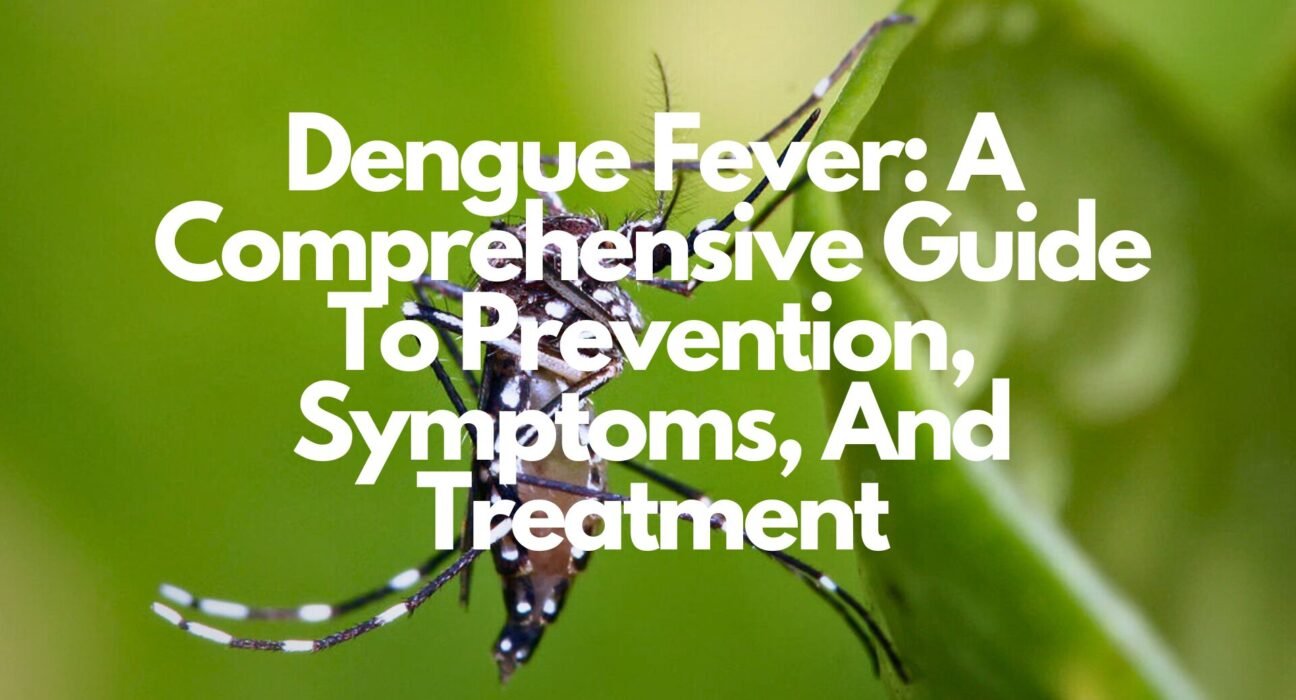Introduction
Dengue fever has emerged as one of the most significant mosquito-borne viral infections, affecting millions globally, particularly in tropical and subtropical regions. Understanding this potentially life-threatening condition becomes increasingly crucial for public health as climate change expands the habitat of disease-carrying mosquitoes. This comprehensive guide will explore the various aspects of dengue fever, from its transmission to treatment options, empowering you with the knowledge to protect yourself and your loved ones.
What Is Dengue Fever?
Dengue fever is a complex viral infection transmitted through mosquito bites, specifically from the Aedes aegypti and Aedes albopictus species. The disease is caused by four distinct but closely related dengue viruses (DENV-1, DENV-2, DENV-3, and DENV-4). Dengue is particularly challenging because infection with one serotype doesn’t provide complete immunity against the others. Subsequent infections with different serotypes can increase the risk of developing severe dengue, making prevention crucial.

How Is Dengue Transmitted?
The transmission cycle of dengue fever is intricate and begins when a female Aedes mosquito bites a person infected with the dengue virus. The virus then replicates in the mosquito’s midgut before spreading to its salivary glands over 8–12 days. Once infected, the mosquito can transmit the virus to humans through its bite for the remainder of its life. These mosquitoes are particularly active during daylight hours, with peak biting periods typically occurring in the early morning and before sunset. Urban and semi-urban areas are particularly vulnerable to dengue transmission due to the presence of standing water in man-made containers, which serve as perfect breeding grounds for these mosquitoes.

Symptoms And Clinical Manifestations
Dengue fever presents with a wide spectrum of clinical manifestations, typically beginning with a sudden onset of high fever (40°C/104°F) following an incubation period of 4–10 days after the infected mosquito bite. The initial phase is characterized by severe headache, particularly behind the eyes, accompanied by intense muscle and joint pain – hence the historical name “break bone fever.” Many patients experience nausea, vomiting, and a characteristic rash that appears 2–5 days after the onset of fever. The acute phase of the illness typically lasts 3–7 days, during which patients may also experience extreme fatigue, loss of appetite, and severe discomfort.
Early Symptoms (Days 1-3)
- High fever (40°C/104°F)
- Severe headache
- Eye pain (especially behind the eyes)
- Muscle and joint pain
- Nausea and vomiting
- Fatigue
Later Symptoms (Days 4-7)
- Severe abdominal pain
- Persistent vomiting
- Bleeding gums or nose
- Blood in urine, stool, or vomit
- Bruising easily
- Difficulty breathing
Warning Signs Of Severe Dengue
- Severe abdominal pain
- Persistent vomiting
- Mucosal bleeding
- Lethargy or restlessness
- Liver enlargement
- Increasing hematocrit with decreasing platelets
Warning Signs And Severe Dengue
The critical phase of dengue infection occurs around the time of defervescence, typically between days 3-7 of illness. During this period, some patients may develop severe dengue, characterized by plasma leakage, severe bleeding, or organ impairment. Warning signs include severe abdominal pain, persistent vomiting, mucosal bleeding, lethargy or restlessness, and liver enlargement. A particular concern is the rapid drop in platelet count accompanied by an increase in hematocrit, indicating plasma leakage. These signs require immediate medical attention as they can rapidly progress to shock and potentially death if not properly managed.
Prevention And Environmental Control
Prevention of dengue fever relies heavily on controlling the mosquito vector population and minimizing human-vector contact. Environmental management plays a crucial role in this effort. This involves regular inspection and elimination of potential mosquito breeding sites around homes and communities. Common breeding sites include water-filled containers, old tires, flower pots, and any receptacle that can collect rainwater. Communities should implement regular cleaning campaigns to remove standing water and maintain proper drainage systems. Additionally, the use of larvicides in water containers that cannot be emptied or covered can help control mosquito populations effectively.
Natural And Home-Based Management
While medical treatment is essential for dengue fever, several home-based management strategies can support recovery and alleviate symptoms. Hydration is paramount, and patients should consume plenty of fluids, including water, oral rehydration solutions, and coconut water. Papaya leaf extract has gained attention for its potential to increase platelet counts, though it should not replace medical treatment. Traditional remedies like turmeric milk and giloy juice may help boost immunity and manage symptoms. However, it’s crucial to note that these remedies should complement, not replace, medical care, particularly if warning signs are present.

Hydration Solutions
- Coconut Water
- Rich in electrolytes
- Helps prevent dehydration
- ORS (Oral Rehydration Solution)
- Mix 6 teaspoons of sugar
- 1/2 teaspoon of salt
- 1 liter of clean water
Immune-Boosting Foods
- Papaya Leaf Extract
- Helps increase platelet count
- Boosts immune system
- Other Beneficial Items
- Giloy juice
- Turmeric milk
- Fresh fruit juices
- Green leafy vegetables
Medical Treatment And Care
Medical management of dengue fever focuses on supportive care, as there is no specific antiviral treatment available. The cornerstone of treatment is proper fluid management, especially during the critical phase. Mild cases can often be managed at home with regular monitoring of temperature, hydration status, and warning signs. However, hospitalization may be necessary for severe cases or patients with comorbidities. In hospital settings, treatment may include intravenous fluid therapy, blood or platelet transfusions if necessary, and close monitoring of vital signs and blood parameters. It’s crucial to avoid aspirin and non-steroidal anti-inflammatory drugs (NSAIDs) as they can increase bleeding risk.
Recovery And Rehabilitation
Recovery from dengue fever is typically complete but can be prolonged, especially in severe cases. The convalescent phase may last several weeks, during which patients often experience fatigue, depression, and reduced physical capacity. A gradual return to normal activities is recommended, with attention to proper nutrition and adequate rest. Some patients may experience hair loss and reduced immunity in the months following infection. Regular follow-up with healthcare providers is important to monitor recovery and address any lingering symptoms or complications.
Conclusion
Dengue fever remains a significant public health challenge, but understanding its transmission, recognizing its symptoms, and knowing proper prevention and treatment measures can significantly reduce its impact. While we await the development of effective vaccines and treatments, the focus must remain on prevention through vector control and personal protection measures. Community engagement and public health education play crucial roles in controlling dengue outbreaks. Stay informed, remain vigilant, and take proactive steps to protect yourself and your community from this challenging disease.
Visit Woocur For More Such Blogs
“Experience the power of words with Woocur: Empowering Writers, Inspiring Readers”
Thank you for reading 🙂






